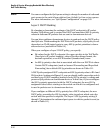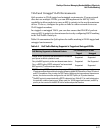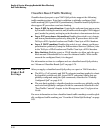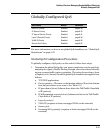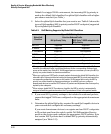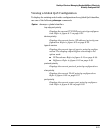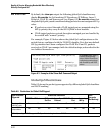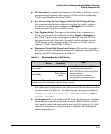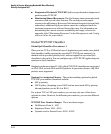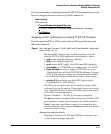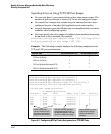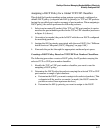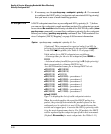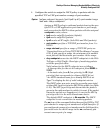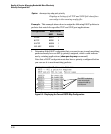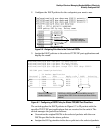
Quality of Service: Managing Bandwidth More Effectively
Globally-Configured QoS
■ Fragmented Packets & TCP/UDP: QoS is not performed on fragmented
packets under TCP/UDP
■ Monitoring Shared Resources: The QoS feature shares internal switch
resources with several other features. The switch provides ample
resources for all features. However, if the internal resources become fully
subscribed, additional QoS provisions cannot be configured until the
necessary resources are released from other uses. For information on
determining the current resource availability and usage, refer to the
appendix titled “Monitoring Resources” in the Management and Config-
uration Guide for your switch.
Global TCP/UDP Classifier
Global QoS Classifier Precedence: 1
When you use TCP or UDP and a Layer 4 Application port number as a global
QoS classifier, traffic carrying the specified TCP/UDP port number(s) is
marked with a specified priority level, without regard for any other QoS
classifiers in the switch. You can configure up to 50 TCP/UDP application port
numbers as QoS classifiers.
Note Starting in software release K.14.01, global TCP/UDP classifiers are supported
on IPv4, IPv6, or both IPv4 and IPv6 packets. In previous releases, only IPv4
packets were supported.
Options for Assigning Priority. The packet-marking options for global
TCP/UDP port-number classifiers include:
■ 802.1p priority
■ DSCP policy (Assigning a new DSCP and an associated 802.1p priority;
inbound packets can be IPv4 or IPv6.)
For a given TCP or UDP port number, you can use only one of the above
options at a time. However, for different port numbers, you can use different
options.
TCP/UDP Port Number Ranges. There are three ranges:
■ Well-Known Ports: 0 - 1023
■ Registered Ports: 1024 - 49151
■ Dynamic and/or Private Ports: 49152 - 65535
6-24



